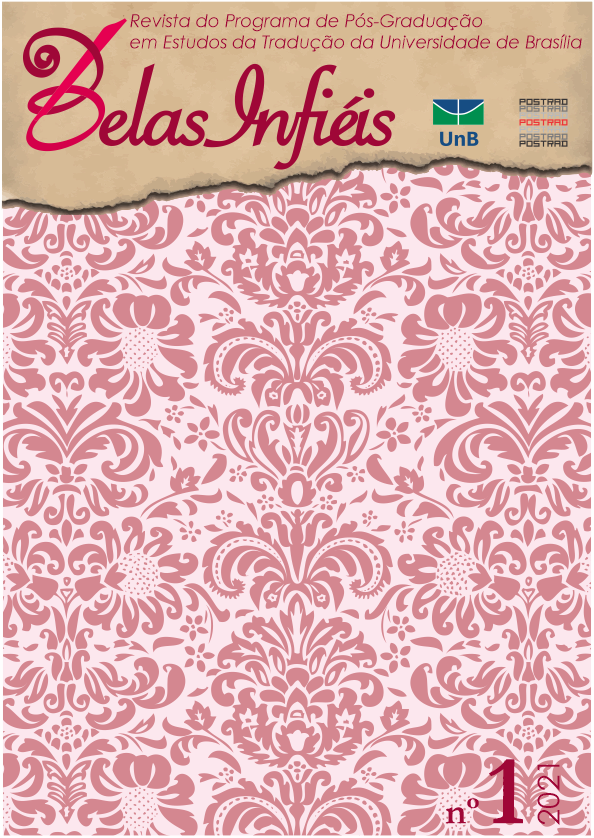Critical Review: De la Hipótesis a la Tesis en Traducción e Interpretación, by Antonio Bueno, Jana Králová and Pedro Mogorrón
DOI:
https://doi.org/10.26512/belasinfieis.v10.n1.2021.35417Keywords:
Translation. Interpreting. Research. Translation Theory. Specialised Translation.Abstract
This book review addresses the collective book entitled De la hipótesis a la tesis en Traducción e Interpretación, edited by Antonio Bueno, Jana Králová and Pedro Mogorrón. This work is the output of the Virtual Conference “De la hipótesis a la tesis en Traducción e Interpretación” [From Hypothesis to Thesis in Translation and Interpreting Studies], which was held online by the University of Valladolid (Spain) in February 2019. The book describes the current state-of-the-art concerning Translation and Interpreting Studies within several doctoral programmes of international universities. The 32 chapters composing the book are gathered together around eight different specialised topics.
Downloads
References
Baker, M. (1993). Corpus Linguistics and Translation Studies. Implications and Applications. In M. Baker, G. Frances & E. Tognini-Bonelli (Eds), Text and Technology (pp. 233–250). John Benjamins.
Bowker, L., & Pearson, J. (2002). Working with Specialized Language: A practical guide to using corpora. Routledge.
Bueno García, A., Králová, J., & Mogorrón, P. (Eds.). (2020). De la hipótesis a la tesis en traducción e interpretación. Comares.
Foucault, M. (1992). O que é um autor. Vega.
Laviosa, S. (2010). Corpora. In L. Van Doorslaer & Y. Gambier (Eds.), Handbook of Translation Studies (vol. I, pp. 80–86). John Benjamins.
Martin, J., & White, P. (2005). The Language of Evaluation: Appraisal in English. Palgrave Macmillan.
Munday, J. (2012). Evaluation in Translation: Critical Point of Translator Decision-Making. Routledge.
Vila-Matas, E. (2008). Asasina cultivata. Rao Contemporan.
Downloads
Published
How to Cite
Issue
Section
License
Copyright (c) 2021 CC BY

This work is licensed under a Creative Commons Attribution 4.0 International License.
Given the public access to this journal, the texts are free to use but requires the recognition of the original authorship and initial publication in this journal to be properly stated.
 The journal allows the use of works published for non-commercial purposes, including the right to submit the work to publicly accessible databases. Published contributions are the sole and exclusive responsibility of the author(s).Â



















